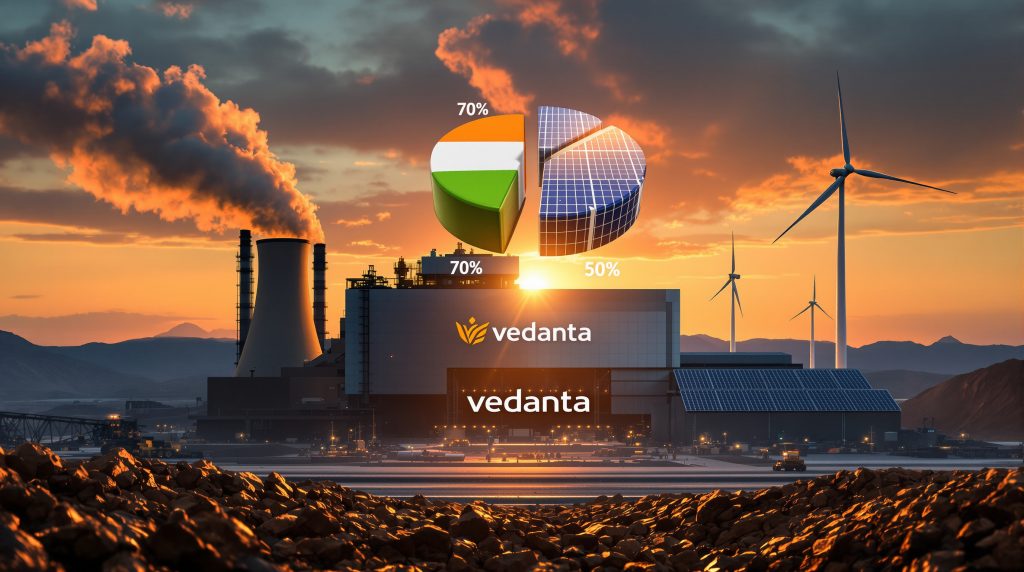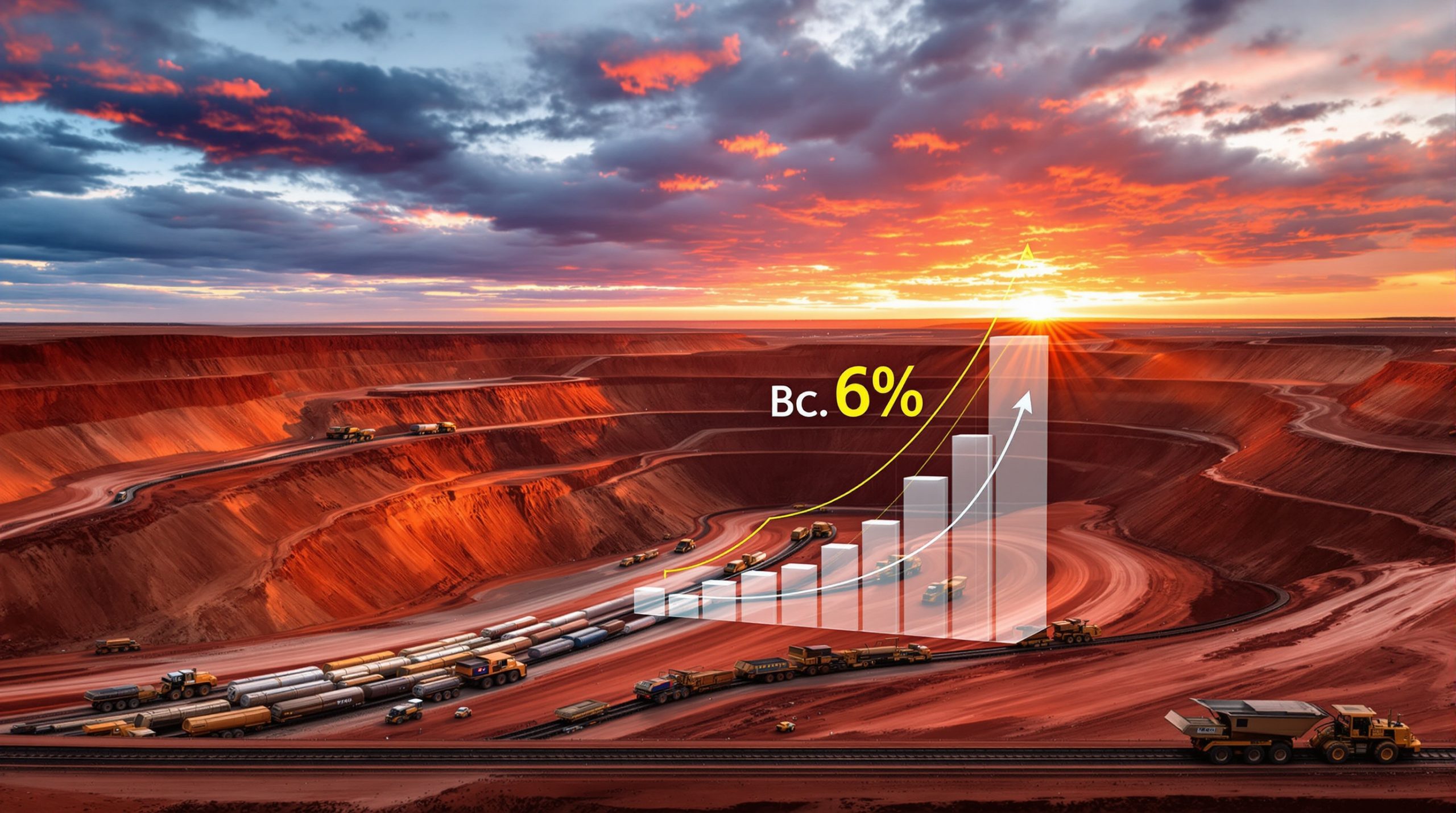Vedanta's Coal Energy Strategy: Balancing Tradition with Transition
How is Vedanta approaching its energy transition strategy?
Vedanta, one of India's largest mining conglomerates, has developed a pragmatic Vedanta coal energy strategy that maintains coal as its foundation while gradually incorporating renewable alternatives. This balanced approach reflects both operational necessities and environmental aspirations as the company navigates the complex landscape of energy transition strategies in resource-intensive industries.
The mining giant currently relies on coal for approximately 70% of its energy needs but aims to reduce this dependency significantly within the next few years. This measured approach acknowledges both the continuing importance of reliable baseload power and the growing imperative to reduce carbon emissions across its operations.
Industry experts note that Vedanta's strategy represents a middle path between maintaining full coal dependency and pursuing rapid, potentially disruptive transitions. By gradually integrating renewable alternatives while securing its baseload requirements, the company aims to achieve sustainability improvements without compromising operational stability.
What is Vedanta's current energy mix?
Vedanta's energy portfolio remains heavily weighted toward conventional sources, with coal maintaining a dominant position in the company's operations:
| Energy Source | Current Percentage | Target (3-4 years) |
|---|---|---|
| Coal | ~70% | 50-60% |
| Renewables | ~30% | 40-50% |
This strategic mix reflects the operational realities of mining and metals processing, which require consistent, high-capacity power sources that can meet intensive energy demands. The company's gradual transition acknowledges the technical and economic challenges of rapidly shifting away from established energy systems.
For energy-intensive operations like aluminum smelting and zinc production, maintaining reliable power is particularly critical. Even minor interruptions can result in significant production losses and equipment damage, making the stability of energy supply a paramount concern in Vedanta's transition planning.
Why is Vedanta maintaining coal as its baseload energy source?
The mining giant has explicitly identified coal as its "baseload contributor" for several strategic reasons:
- Operational reliability: Mining and metals processing require consistent, high-capacity power that can operate continuously
- Infrastructure compatibility: Existing operations are designed around coal-based energy systems
- Economic considerations: Coal remains cost-effective for large-scale industrial applications
- Supply security: Self-sourced coal provides protection against market volatility and supply disruptions
- Technical limitations: Alternative energy sources cannot yet fully replace coal's capacity and reliability for energy-intensive operations
Vedanta's CEO Deshnee Naidoo has emphasized this commitment, stating: "Coal will be, for us in Vedanta, the baseload contributor. We are absolutely in production." This position reflects the practical challenges of energy transition in heavy industry rather than resistance to change.
Industry analysts note that the energy density and dispatchability of coal mining energy boost make it particularly well-suited for mining operations, which often require significant power at remote locations. While renewable alternatives continue to advance, they still face challenges in meeting the round-the-clock demands of large-scale metallurgical processes.
How is Vedanta integrating renewable energy into its operations?
Despite maintaining coal as its foundation, Vedanta is actively expanding its renewable energy portfolio through several initiatives:
- Hybrid energy models that combine conventional and renewable sources
- Solar and wind investments across operational locations
- Balanced development of new power generation facilities
- Gradual integration of renewables into existing operations
The company's approach to renewable adoption is pragmatic rather than revolutionary, focusing on steady integration that maintains operational stability while reducing environmental impact over time.
Mining industry trends innovation experts note that this hybrid approach allows companies like Vedanta to benefit from the declining costs of renewable technologies while maintaining the reliability needed for continuous operations. By developing complementary systems rather than replacement strategies, the company can optimize its energy mix according to specific operational requirements and regional conditions.
What are Vedanta's international energy strategies?
Vedanta's energy transition strategy extends beyond India to its international operations, with notable developments in Zambia:
- Planned 300MW power facility divided equally between coal and renewable sources
- Response to severe local power shortages that can last up to 20 hours daily
- Support for copper production expansion from current 180,000-200,000 tonnes to 300,000 tonnes
- Balanced approach that addresses immediate needs while building future capacity
This international strategy demonstrates how Vedanta is adapting its energy approach to local conditions while maintaining its core principle of balanced transition.
The company's investment in Zambia reflects a recognition of the critical infrastructure challenges facing mining operations in developing regions. By establishing reliable power generation capacity, Vedanta aims to stabilize its production capabilities while contributing to local energy security in a region plagued by severe power shortages.
What role do low-carbon products play in Vedanta's strategy?
Beyond energy sourcing, Vedanta is pursuing product-level sustainability through:
- Investment in low-carbon aluminum and zinc production
- Integration of renewable energy into manufacturing processes
- Exploration of hydrogen applications in metals production
- Gradual expansion of sustainable product lines
Currently, these low-carbon products represent less than 20% of Vedanta's total output, but the company plans to increase this proportion significantly. This product-focused approach complements Vedanta's broader Vedanta coal energy strategy by addressing sustainability throughout the value chain.
The metals industry has seen growing demand for low-carbon products, particularly from automotive, electronics, and construction sectors with their own sustainability targets. By developing specialized low-carbon product lines, Vedanta is positioning itself to serve these premium market segments while gradually transforming its production processes.
How does Vedanta's coal mining support its energy security?
Vedanta has strategically invested in coal mining operations to support its energy needs:
- Jamkhani coal mine in Odisha serves the Jharsuguda aluminum smelter
- Three additional coal blocks allocated between 2020-2023
- Vertical integration to reduce procurement costs and supply risks
- Implementation of sustainable mining practices at new operations
These investments reflect Vedanta's commitment to securing reliable energy sources while implementing more sustainable operational practices. However, regulatory hurdles have delayed the development of some mining assets.
For metals producers, energy costs can represent 30-40% of total production expenses, making energy security a critical business concern. By securing dedicated coal supplies through vertical integration, Vedanta aims to stabilize one of its most significant input costs while reducing exposure to volatile international energy markets.
What challenges is Vedanta facing in its energy transition?
The company's energy transition faces several significant obstacles:
- Regulatory complexity surrounding mining permits and energy development
- Technical limitations of renewable alternatives for high-intensity operations
- Infrastructure constraints in developing markets
- Balancing shareholder expectations with sustainability goals
- Regional power reliability issues, particularly in international operations
These challenges help explain Vedanta's measured approach to energy transition, which prioritizes operational stability while making incremental progress toward sustainability goals.
The regulatory environment poses particular challenges, as evidenced by the Indian government's recent intervention in Vedanta's proposed corporate restructuring. According to Mining Technology reports, authorities halted Vedanta's plan to split into four entities over concerns regarding dues recovery, demonstrating the complex regulatory landscape mining companies must navigate.
What is Vedanta's timeline for reducing coal dependency?
Vedanta has established a clear but measured timeline for its energy transition:
- 3-4 year horizon for reducing coal dependency to 50-60%
- Phased implementation of renewable alternatives
- Gradual expansion of low-carbon product lines
- Ongoing development of coal assets to maintain energy security
This timeline reflects both ambition and pragmatism, acknowledging the complexity of transforming energy systems in resource-intensive industries while maintaining operational performance.
Industry observers note that this medium-term approach allows for technological developments in renewable energy storage and generation to mature, potentially enabling more rapid transitions in later phases. By establishing a gradual reduction target, Vedanta maintains flexibility to accelerate its transition as technologies improve.
How does Vedanta's approach compare to industry peers?
Vedanta's energy strategy represents a middle path in the mining industry:
- More progressive than companies maintaining full coal dependency
- More pragmatic than those pursuing rapid, complete transitions
- Balanced approach that acknowledges operational realities
- Recognition of regional differences in energy availability and reliability
This positioning allows Vedanta to maintain operational stability while making meaningful progress toward decarbonisation benefits, potentially offering a model for other resource companies facing similar challenges.
Mining and metals processing face unique energy transition challenges compared to other industries due to their high energy intensity, continuous operation requirements, and often remote locations. Vedanta's balanced approach reflects these sector-specific realities while acknowledging the broader imperative to reduce carbon emissions.
What are the implications of Vedanta's energy strategy for investors?
For investors, Vedanta's Vedanta coal energy strategy offers several considerations:
- Operational stability through maintained baseload capacity
- Reduced regulatory risk through gradual sustainability improvements
- Balanced exposure to both conventional and renewable energy
- Long-term positioning for energy transition without short-term disruption
- Potential resilience against both energy price volatility and carbon regulation
The company's measured approach may appeal to investors seeking sustainability progress without the operational risks of rapid transformation.
Disclaimer: This analysis represents current understanding of Vedanta's energy strategy based on public information. Actual implementation may vary based on changing market conditions, regulatory environments, and company decisions. Investors should conduct their own research before making investment decisions.
Further Exploration:
Readers interested in learning more about energy transition strategies in the mining sector can also explore related educational content from Mining Technology, which offers additional perspectives on how mining companies are balancing conventional and renewable energy sources.
Want to Get Early Access to Major ASX Mining Discoveries?
Discover why major mineral finds can lead to exceptional returns by exploring Discovery Alert's dedicated discoveries page, where our proprietary Discovery IQ model delivers real-time alerts on significant ASX mineral announcements, turning complex data into actionable investment opportunities.




